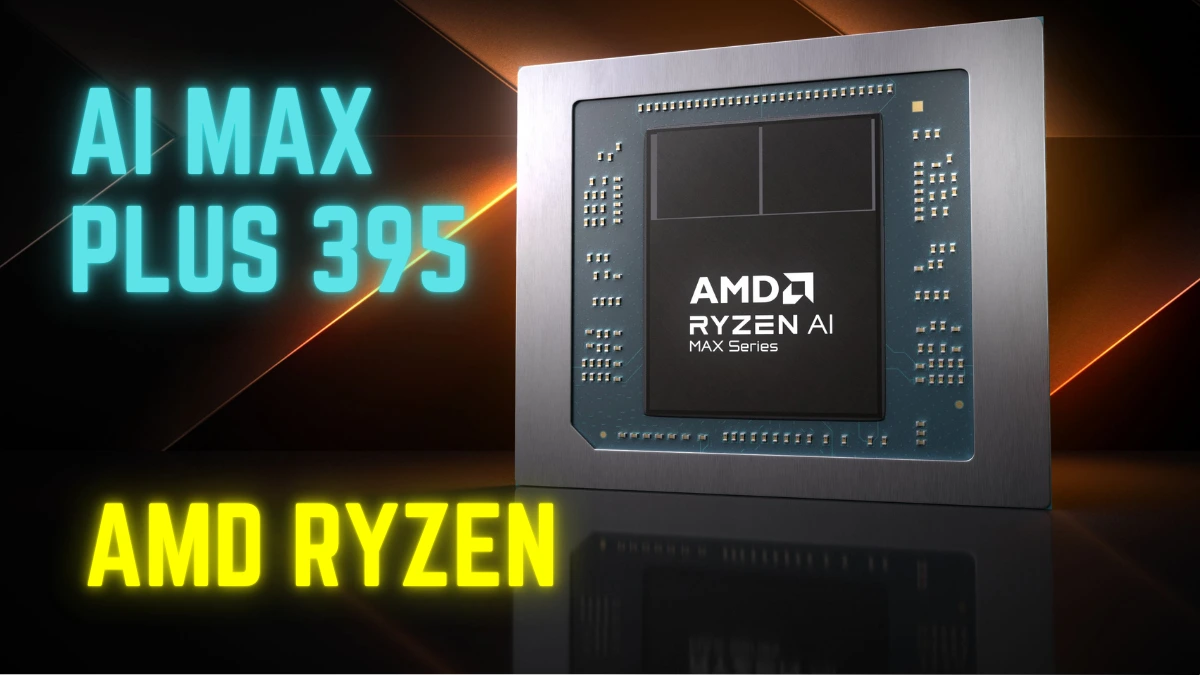Best GPUs Under $100 (2025): Discover the best graphics cards under $100 in 2025 as we compare the GTX 1070, GTX 1080, and GTX 1660 Super for 1080p gaming, FPS performance, driver support, and value for money—your ultimate budget GPU buyer’s guide.
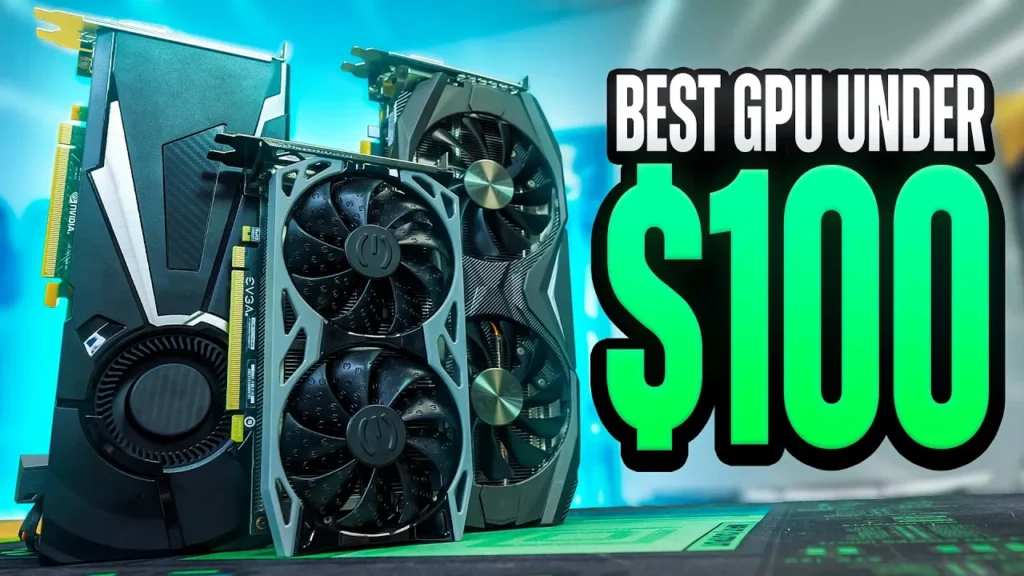
When you’ve only got $100 in your pocket for a graphics card, you might think you’re destined for lag, stutters, and low-quality visuals. But here’s the truth: 2025 still has some fantastic sub-$100 GPUs that can deliver surprisingly good performance—if you know where to look. In this guide, we pit three contenders against each other: the GTX 1070, the GTX 1080, and the GTX 1660 Super. All are under $100, all are battle-tested, and each has its own strengths.
| Feature | GTX 1070 | GTX 1080 | GTX 1660 Super |
|---|---|---|---|
| Launch (MSRP) | Jun 2016 ($379) | May 2016 ($599) | Oct 2019 ($229) |
| Architecture / Node | Pascal / 16nm | Pascal / 16nm | Turing (no RT) / 12nm |
| VRAM | 8GB GDDR5 | 8GB GDDR5X | 6GB GDDR6 |
| Typical Used Price | $80 | $96 | $100 |
| Ports | 3x DP, 1x HDMI, 1x DVI | 3x DP, 1x HDMI, 1x DVI | 1x DP, 1x HDMI, 1x DVI |
| 1080p Esports (Fortnite/CS2) | High FPS (200–300+) | Very High FPS (250–400+) | Very High FPS (220–360+) |
| AAA @1080p (no upscaling) | Medium/Playable | Medium–High/Playable | Medium/Playable |
| Upscaling Support | FSR (no DLSS) | FSR (no DLSS) | FSR (no DLSS) |
| Driver Support Horizon | Near EOL (late 2025) | Near EOL (late 2025) | Active (longer-term) |
| Power Draw (approx.) | ~150W | ~180W | ~125W |
| Best For | Lowest cost 8GB option | Raw performance under $100 | Longevity & efficiency |
By the end, you’ll know exactly which one is the right choice for you—whether you care most about raw FPS, future driver support, or stretching every cent to its limit.
Table of Contents
Why the $100 GPU Market Still Matters in 2025
Who This Guide Is For
This guide is aimed at budget-conscious gamers, students, casual PC users, and even tinkerers who want a decent gaming experience without draining their bank accounts. Maybe you’re building a PC from spare parts, or maybe you just want a capable backup machine for LAN parties—either way, this guide’s for you.
Why $100 Can Still Get You a Good GPU
You might think the days of sub-$100 GPUs worth buying are over, but that’s not the case. While you won’t get 4K ultra settings or ray tracing magic, these cards can still deliver solid 1080p performance in most esports titles and even hold their own in some modern AAA games—especially if you’re willing to tweak settings and use upscaling tools like FSR.

The Challenge of Finding a Good Budget GPU
Limited Options in the Sub-$100 Market
The budget GPU space has always been tricky, and 2025 is no different. Prices on the used market fluctuate wildly, and demand for budget-friendly options often drives up costs beyond their real value. Many older cards are now collector’s items or simply too slow to be relevant for gaming.
Why Nvidia Dominates This Price Range in 2025
For this showdown, every card we picked is from Nvidia’s lineup. That wasn’t a brand loyalty choice—it’s just what the market offers right now. AMD’s used GPUs, like the RX 5600 XT or RX 580, often go for more than $100 or come with major trade-offs, such as poor driver support or higher power consumption. At this price point, Nvidia cards simply give you more performance per dollar.
Our Top Three Picks for Under $100
How We Selected These GPUs
We didn’t just grab any cheap graphics card off eBay. We looked for:
- Consistent availability under $100
- Good 1080p performance in both esports and modern AAA titles
- Reasonable power efficiency so they can run on older PSUs
- VRAM capacity that can handle today’s games without constant stuttering
Why AMD Didn’t Make the Cut This Time
While AMD cards like the RX 580 were budget kings in the past, their current pricing and availability put them out of our sub-$100 category. In many cases, you’d be paying $20–$40 more for equal or worse performance compared to the Nvidia cards in this roundup.
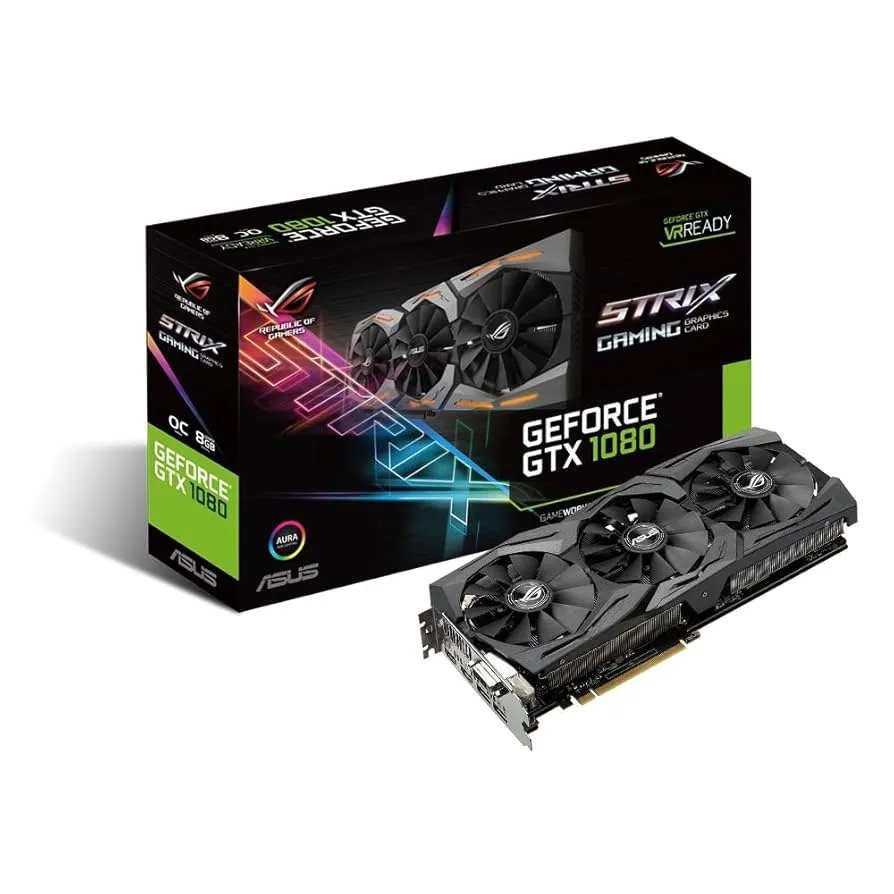
The Contenders – Specs, History, and Prices
GTX 1070 – The Old Reliable
- Launch Date: June 10, 2016
- MSRP at Launch: $379
- VRAM: 8GB GDDR5
- Ports: 3× DisplayPort, 1× HDMI, 1× DVI
- Typical Used Price: ~$80
The GTX 1070 has aged gracefully. With 8GB of VRAM, it can still handle many modern games at 1080p with medium settings, though newer, more demanding titles will push it to its limits. Its biggest strength today is its price—you can often find it for $70–$85, making it the cheapest of our three picks.
GTX 1080 – The Performance Champ
- Launch Date: May 27, 2016
- MSRP at Launch: $599
- VRAM: 8GB GDDR5X
- Ports: 3× DisplayPort, 1× HDMI, 1× DVI
- Typical Used Price: ~$96
The GTX 1080 is simply faster than the other two in raw horsepower. It can still push high frame rates in esports titles and maintain playable performance in modern games. However, its looming end-of-life driver support (scheduled for late 2025) means its future is more limited.
GTX 1660 Super – The Newest of the Bunch
- Launch Date: October 29, 2019
- MSRP at Launch: $229
- VRAM: 6GB GDDR6
- Ports: 1× DisplayPort, 1× HDMI, 1× DVI
- Typical Used Price: ~$99
The GTX 1660 Super might not be as powerful as the 1080, but it’s more efficient, uses less power, and—most importantly—still gets driver updates. If you’re looking for a card that will stay relevant a bit longer, this is the one.
Test Bench Setup and Methodology
Hardware Used for Testing
We wanted to test these cards in a fair, consistent environment, so our test bench used:
- CPU: Ryzen 5 9600X
- RAM: 32GB DDR5
- Storage: NVMe SSD
- PSU: 650W Gold Rated
Why Consistent Test Conditions Matter
Using the same CPU, RAM, and power supply ensures that the GPU is the only variable affecting game performance. This gives us a true apples-to-apples comparison between cards.
The Games and Benchmarks We Chose
We picked a mix of demanding AAA titles and popular esports games to represent the most likely use cases for these GPUs:
- Cyberpunk 2077 (AAA modern stress test)
- Black Myth: Wukong Benchmark (new-gen visuals)
- Fortnite (esports focus)
- Counter-Strike 2 (competitive low-latency gaming)
- 3DMark Time Spy (synthetic benchmark for price-per-performance analysis)
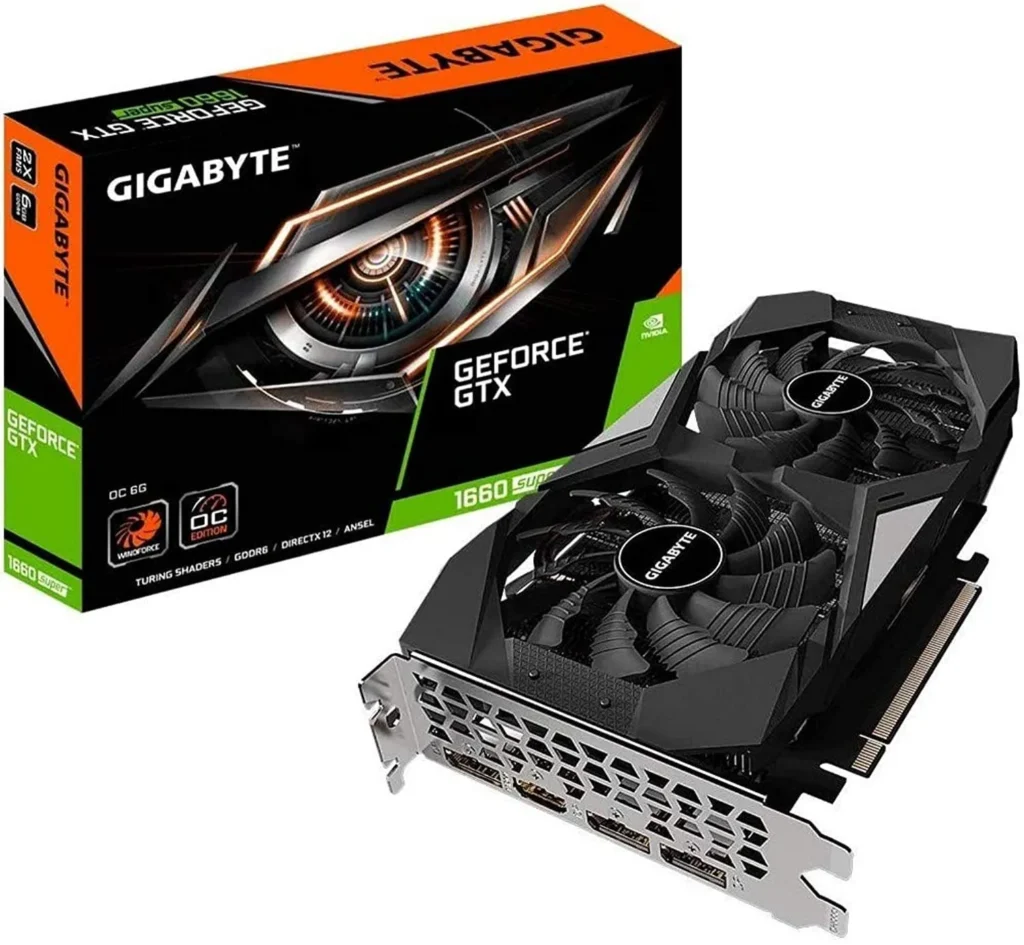
Performance in Modern AAA Games
Cyberpunk 2077 – Pushing the Limits
Cyberpunk 2077 is one of the most demanding games you can throw at a graphics card, even in 2025. We tested it at 1080p, Medium settings, no upscaling to see how each card fared in a raw performance scenario.
- GTX 1070: Averaged ~54 FPS with occasional dips into the mid-40s. Playable, but the experience can feel choppy in intense scenes without FSR.
- GTX 1080: Averaged ~70 FPS, a noticeable step up that feels much smoother overall. Enough headroom to crank up a few settings or enable quality-based upscaling for even better visuals.
- GTX 1660 Super: Averaged ~62 FPS, sitting between the two. While it trails the 1080, it benefits from current driver optimizations, meaning future updates might help it stay relevant longer.
When we enabled FSR Quality Mode, all three cards jumped by roughly 15–20 FPS, with the 1080 flirting with 90 FPS and the others comfortably above 60 FPS.
Black Myth: Wukong Benchmark – Stress Test Results
Black Myth: Wukong’s benchmark is designed to punish GPUs with high-end lighting and particle effects. At 1080p, Medium settings, no upscaling:
- GTX 1070: Averaged 34 FPS, dropping into the teens during big particle explosions. Definitely a candidate for FSR on “Balanced” or “Performance” mode to get closer to 60 FPS.
- GTX 1080: Averaged 42 FPS, still not hitting the magical 60 FPS mark but better equipped to handle heavy scenes without tanking as hard.
- GTX 1660 Super: Averaged 36 FPS, putting it just slightly ahead of the 1070 but still far behind the 1080 in raw horsepower.
This benchmark confirmed one key thing: if you want the best possible raw power for under $100, the GTX 1080 is the clear winner—driver support concerns aside.
Performance in Esports Titles
Fortnite – High FPS at Low Settings
For Fortnite, we ran 1080p Performance Mode, far view distance, and low textures—exactly how competitive players prefer to play.
- GTX 1070: Averaged 300–320 FPS, with dips into the high 200s during intense build fights.
- GTX 1080: Averaged 350–380 FPS, with rare drops below 300 FPS. Smooth as butter.
- GTX 1660 Super: Averaged 320–340 FPS, just shy of the 1080’s performance.
The takeaway? In Fortnite, you’ll barely notice a difference between these cards if your goal is max FPS for competitive advantage. Here, CPU choice matters more than GPU, so even the cheapest option is viable.
Counter-Strike 2 – CPU vs GPU Bound
Counter-Strike 2 is heavily CPU-bound, but we still tested at 1080p, Medium settings to keep the GPU involved:
- GTX 1070: Averaged ~373 FPS with 1% lows around 160 FPS.
- GTX 1080: Averaged ~447 FPS, with slightly better lows around 178 FPS.
- GTX 1660 Super: Averaged ~386 FPS, with lows around 156 FPS.
Here again, the difference between cards is minor for competitive shooters. Unless you’re running a 240Hz+ monitor and truly care about squeezing every last frame, the cheapest option will do fine.

VRAM and Driver Support – The Longevity Factor
Why Driver Support Is as Important as FPS
One of the most overlooked parts of buying a used GPU is driver support. A card might run great now, but if it stops getting updates, newer games can become unplayable—or fail to launch entirely.
- GTX 1070 & GTX 1080: Both are approaching end-of-life driver support in late 2025. After that, they’ll still run existing games just fine, but compatibility with new releases will become hit-or-miss.
- GTX 1660 Super: Still in Nvidia’s current driver cycle and likely to be supported for several more years, making it the safer long-term buy.
VRAM Needs for 2025 and Beyond
In 2025, 6GB of VRAM is still enough for most esports titles and optimized AAA games at 1080p. However, certain modern releases like The Last of Us Part I or Hogwarts Legacy can push past that, especially if textures are set to high.
- 8GB (GTX 1070 & 1080): More future-proof for texture-heavy games, but doesn’t offset the lack of driver updates.
- 6GB (1660 Super): Lower VRAM but balanced by newer architecture and driver support.
If your focus is longevity and you don’t mind dropping texture quality occasionally, the 1660 Super’s VRAM is fine. If you want to play newer, texture-heavy games without compromises, the 1080’s 8GB might tempt you.
Price-to-Performance Analysis
Cents per Point from 3DMark Time Spy
We ran 3DMark Time Spy GPU tests to measure performance in a controlled synthetic environment, then calculated cost per performance point:
| GPU | Score | Price | Cents per Point |
|---|---|---|---|
| GTX 1070 | 5,960 | $80 | $0.01338 |
| GTX 1080 | 7,756 | $96 | $0.01238 |
| GTX 1660 Super | 6,031 | $100 | $0.01659 |
Here, lower is better—and the GTX 1080 wins by a hair, giving the best raw value for money if all you care about is frame rate per dollar.
Which Card Gives the Most Bang for the Buck
- GTX 1080: Best raw price/performance ratio right now.
- GTX 1070: Second-best value, especially if you snag it for under $75.
- GTX 1660 Super: Worst raw price/performance, but potentially best real-world value if you account for driver updates and efficiency.
Real-World Playability
Upscaling (FSR vs Native)
Without upscaling, none of these cards can hit 60 FPS in the heaviest games at high settings. Thankfully, AMD’s FSR (supported on all three) can turn a borderline experience into a smooth one without much quality loss at 1080p.
- GTX 1070: Sees ~40% performance gains in heavy titles with FSR Balanced mode.
- GTX 1080: Gains ~30–35% but starts from a higher baseline, so results feel smoother.
- GTX 1660 Super: Benefits most from FSR due to newer architecture handling the scaling better.
Power Consumption and Heat Output
Power draw matters if you’re using an older PSU or want a quieter, cooler system:
- GTX 1070: ~150W under load.
- GTX 1080: ~180W under load, gets noticeably warmer.
- GTX 1660 Super: ~125W under load, runs cooler and more efficient.
If you’re building in a compact case or with a small PSU, the 1660 Super is the safest bet.
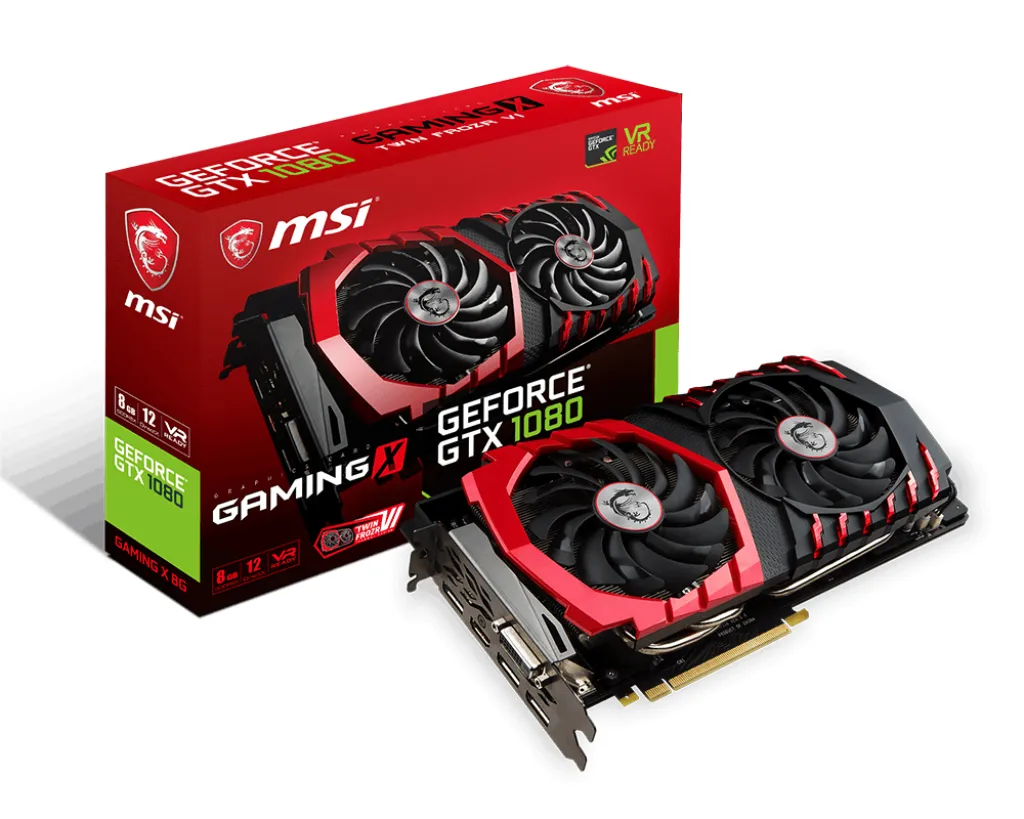
Which One Should You Buy?
Best for Longevity – GTX 1660 Super
If your main priority is buying something that will keep getting driver updates for a few more years, the GTX 1660 Super is the winner. It may not beat the GTX 1080 in raw FPS, but its efficiency, cooler operation, and ongoing driver support make it the most sensible choice for people who plan to hold onto their GPU for a while. You’ll also have a card that performs consistently in modern esports games and can handle AAA titles with the help of FSR.
Best for Raw Performance – GTX 1080
If you don’t care about driver support and just want the fastest possible card for under $100 right now, the GTX 1080 is your best bet. It’s the clear performance leader in AAA games and benchmarks. Just remember that after late 2025, driver updates will stop, which could limit its compatibility with future releases.
Best for Tight Budgets – GTX 1070
The GTX 1070 might be the oldest of the bunch, but if you can grab it for $70–$80, it’s an absolute steal. It delivers solid 1080p gaming, has 8GB of VRAM, and handles esports games with ease. The trade-off is that it’s also near the end of driver support, so you’re buying it for value right now—not for future-proofing.
The State of AMD Under $100 in 2025
Why the RX 580 and Others Didn’t Make the List
Once upon a time, AMD’s RX 580 was the king of budget GPUs, delivering great performance for the price. In 2025, that story has changed. Most RX 580s now sell for $110–$130, which instantly puts them out of our sub-$100 category. On top of that, many used RX 580s on the market are ex-mining cards, meaning they’ve spent years running at full load, increasing the risk of hardware issues.
Other AMD cards, like the RX 570 or RX 5600 XT, either underperform compared to our chosen Nvidia cards or suffer from pricing that doesn’t make sense in today’s market. Simply put, Nvidia wins the sub-$100 battle in 2025 by a comfortable margin.
Upgrading from These Cards
When You Should Consider Spending More
If you’re looking to play modern AAA games at 1440p or higher, even the GTX 1080 will start to struggle in the most demanding titles. In that case, you might want to jump to something like an RTX 3060 or RX 6600, which can often be found used for $180–$220. These will give you modern features like ray tracing and better upscaling technology.
CPUs That Pair Well with These GPUs
For budget builds, there’s no need to go crazy on the CPU. A midrange Ryzen 5 or Intel i5 from the past few years will be more than enough to avoid bottlenecking. Examples include:
- Ryzen 5 3600 (affordable and efficient)
- Ryzen 5 5500 (newer and still cheap)
- Intel Core i5-10400F (great used price)
Pairing one of these with any of our recommended GPUs will ensure you get the most out of your system without wasting money on overkill parts.
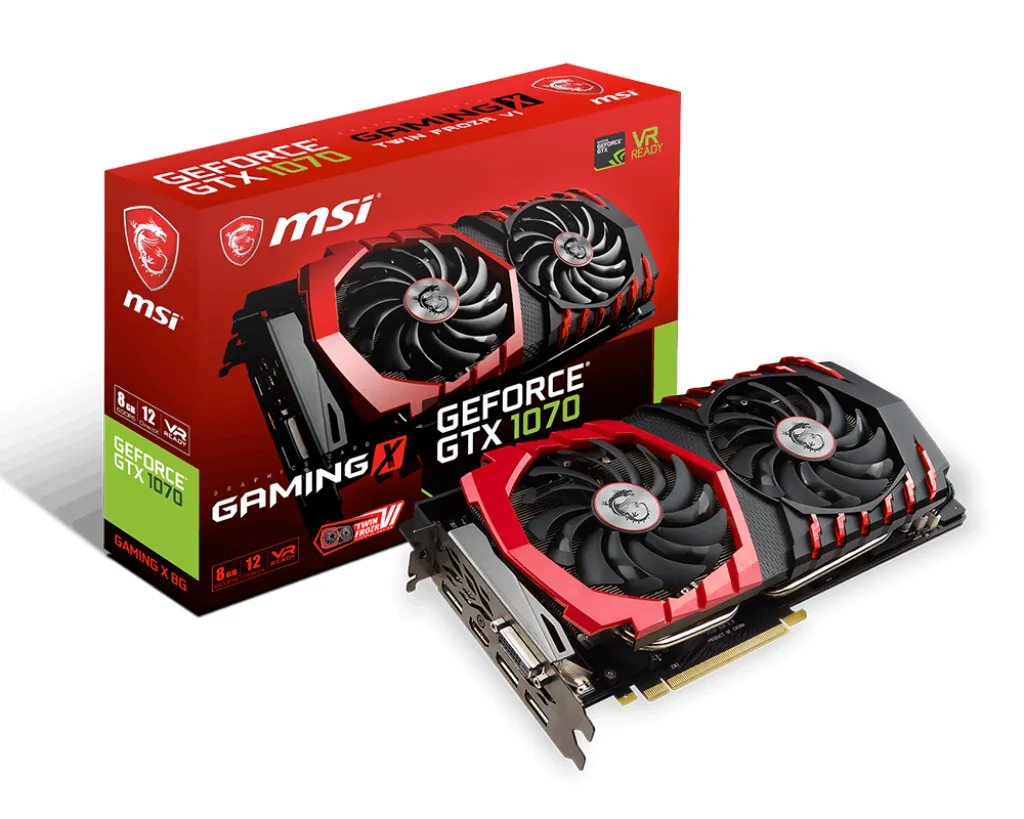
Final Verdict – The $100 GPU Champion for 2025
If we had to crown one card as the best overall buy under $100 in 2025, it would be the GTX 1660 Super. While the GTX 1080 is still the performance king, and the GTX 1070 offers insane value, the 1660 Super strikes the perfect balance between efficiency, driver support, and modern relevance.
That said, your choice really depends on your priorities:
- Want the highest FPS for your dollar right now? Go GTX 1080.
- Want something dirt cheap but still capable? Grab a GTX 1070.
- Want something that will last a few more years without driver issues? Get the GTX 1660 Super.
Whichever you choose, the key takeaway is this: you don’t need to spend a fortune to enjoy good gaming in 2025.
FAQs: Best GPUs Under $100
Q1: Can I still play AAA games with a $100 GPU?
Yes, but you’ll likely need to tweak settings and use upscaling technologies like FSR. Expect smooth 1080p gameplay on medium to high settings for most titles.
Q2: Will these GPUs support ray tracing?
Technically, the GTX 1660 Super supports ray tracing at a basic level, but performance will be poor. The GTX 1070 and 1080 don’t have hardware-accelerated ray tracing cores.
Q3: How long will the GTX 1660 Super get driver updates?
Based on Nvidia’s historical patterns, it should receive driver updates for at least 3–4 more years, making it a safer long-term bet.
Q4: Is buying used GPUs safe in 2025?
Yes—if you buy from reputable sellers, check for warranty stickers, and avoid heavily mined cards. Look for clean physical condition and test it immediately after purchase.
Q5: Should I wait for prices to drop further?
Unlikely. Prices on older GPUs are relatively stable now, and further drops could be minimal unless a major market shift happens.
Please don’t forget to leave a review.
best graphics cards under $100, budget GPU 2025, GTX 1070 under 100, GTX 1080 under 100, GTX 1660 Super under 100, cheap graphics card, 1080p gaming GPU, esports GPU, Fortnite FPS, CS2 FPS, Cyberpunk 2077 1080p, GPU driver support, Nvidia budget GPU, used GPU buying guide, VRAM 6GB vs 8GB, GDDR5 vs GDDR5X vs GDDR6, PCIe Gen 3 GPUs, low power GPU, cool and quiet GPU, cents per point 3DMark, value for money GPU, best GPU deals, sub $100 GPU comparison, TechUplifter GPU guide, GPU for students, entry level gaming PC, eBay GPU tips, price to performance GPU, gaming on a budget
Thank You for visiting Tech Uplifter!
Don’t forget to Subscribe to our Official Newsletter for latest updates.
